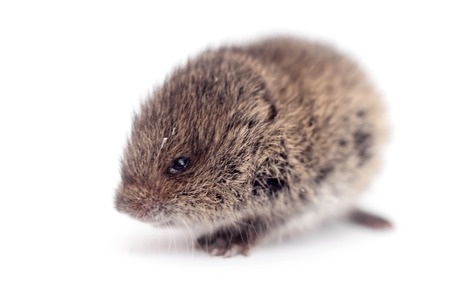Meadow Voles

VOLES: (microtis)
Description:
Meadow Voles, also known as Meadow Mices, are small grayish-brown rodents. They are short-haired, about 5-8 inches long, and appear stubby and compact, with small ears, a short tail, and small eyes.
Biology:
Voles live and feed on the roots, bark, and twigs of various plants, grass, and shrubs. This can cause major damage to landscapes in particular. The burrow holes are clean openings, approximately the size of a golf ball, and have no visible soil mounds. They are very cautious and rarely venture far from their burrow system. The peak breeding season for voles is the spring and fall.
Did You Know?
Meadow Voles are some of the most prolific breeders in the rodent family. Their gestation period is only 21 days allowing them to produce up to 10 litters per year leading to up to 60 new voles from just 1 breeding pair!
Impact:
In moderation, voles are beneficial to the environment. They can improve soil health in areas where they are active and as they dig, they aerate the soil, which improves soil quality. However, while most plants can survive minor vole damage, when vole populations explode to several thousand voles per acre they can cause devastating damage to landscape grasses, shrubs, and trees. In these situations, vole damage can be very costly if they are not controlled.
Solutions:
Since voles rarely feed in the open, an effective preventative measure is to skirt up trees and create a bare area under the drip line to discourage voles from girdling trees. Trunk guards are also effective in protecting trees from above-ground girdling. Registered rodenticides can also be used to eliminate vole populations. Always contact a certified pest professional to apply chemicals and baits.
Additional Links:
http://www.ipm.ucdavis.edu/PMG/PESTNOTES/pn7411.html
